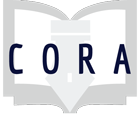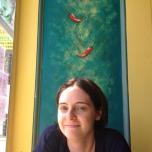This essay assignment asks students to reflect on their research process, evaluate on their sources, and reflect on social justice implications in reference to Catholic social teaching.
dzingsweet
Primary tabs
Assignments Contributed
This assignment is designed to encourage students in introductory-level religious studies classes to check the assumptions they bring to the subject matter and to develop their critical inquiry skills in this area through close examination of primary text passages. The primary textual sources used may be contemporary or historical, depending on the course context.
This set of assignments is designed to help students: (a) grow initial thoughts and questions into carefully scoped and well-reasoned research papers, and (b) develop critical thinking skills through interrogation of familiar images of religion and spirituality in American popular culture.
This assignment asks students to map scholarly citations in order to illustrate the concept that scholarship is a conversation. Secondarily, the activity is meant to demonstrate the constructed and contextual nature of authority in academic discourse. It can be used to help students build up to completing an annotated bibliography, research paper, or presentation that requires scholarly sources.
Assignments Collaborated
In an effort to provide students with an open space to learn about and discuss recent national concerns over “fake news,” the library offered four sessions of the workshop “Keepin’ It Real: Tips & Strategies for Evaluating Fake News” during a campus-wide Inauguration Teach-In on Friday, January 20, 2017. During this session, students had the opportunity to talk about how misleading news sources (encompassing misinformation, disinformation, click-bait, propaganda, etc.) have affected their views on civil discourse, specifically relating to the recent U.S. presidential election.
This assignment is designed to help students develop a thoughtful research topic. Students go through a series of steps, questions, and background reading to help them better understand and refine a research topic.
Assignments Adapted
I adapted this exercise for use in a 60 min. or so library instruction session for a graduate humanities program.* Students had varying levels of experience with academic research, and some had been out of school for 1-2 years and others for several decades. Using this exercise's structure seemed to work well, and I would definitely make use of it again. It surfaced some areas of confusion and good questions during the group's debrief, and students gave positive feedback about the exercise.
I made adjustments to the questions to match the focus of the session (identifying the elements of citations, citation tracing, and using Google Scholar's "Cited by" feature). Students worked in pairs (class size was about 14). The worksheet included the following:
Part 1: Deciphering citations
Looking at the citation you’ve been given, identify the following. Refer to citation guides on your handout if needed.
-Source type (i.e. book, book chapter, article, etc.):
-What are the indicators that you are looking at this type of source?
-Title of item:
-Author:
-Title of container, if applicable (i.e. entire book, journal title, etc.):
Part 2: Tracing citations
-Referring to part 1, search for this item and find the full text or location.
-Were you able to find it?
-If so, how? How would you get access to it?
-Any issues encountered?
Part 3: Find citing works
-Use Google Scholar to find works that cite the original citation from parts 1-2.
-Is this source in Google Scholar?
-Does Google Scholar give a citation count for it?
-What conclusions would you draw or refrain from drawing given this count?
-How relevant are the citing works listed? Please explain.
*A unique academic yoga studies MA program that teaches Sanskrit, Indian philosophy, and the history and practice of yoga through time to licensed yoga instructors.
Contributor Stats
| Total views | Adapters Count | Comment count | Document Downloads |
|---|---|---|---|
| 294 | 0 |
|
| Total views | Adapters Count | Comment count | Document Downloads |
|---|---|---|---|
| 367 | 0 |
|
| Total views | Adapters Count | Comment count | Document Downloads |
|---|---|---|---|
| 202 | 0 |
| Total views | Adapters Count | Comment count | Document Downloads |
|---|---|---|---|
| 862 | 6 | 0 |
|

